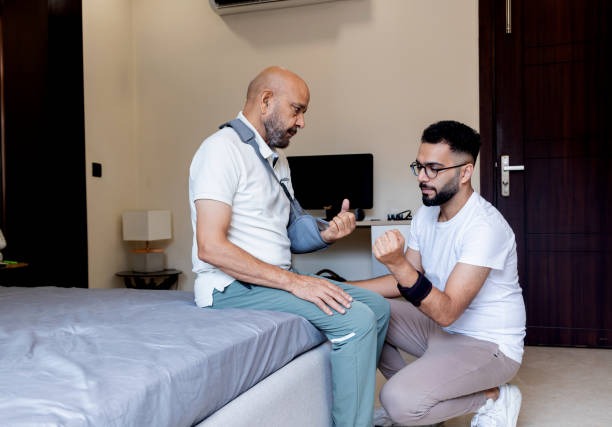
Sports-related injuries are an unfortunate yet common occurrence for athletes and fitness enthusiasts alike. These injuries can range from minor sprains to more serious conditions like torn ligaments or fractures, often resulting in pain, reduced mobility, and time away from the sport. Physiotherapy offers a comprehensive approach to managing these injuries, focusing not only on healing but also on preventing future occurrences.
One of the most prevalent sports-related injuries is a sprain, particularly in the ankle or wrist. Physiotherapists address these by initially reducing swelling through techniques such as cryotherapy (cold therapy) and compression bandaging. Once acute inflammation subsides, they introduce exercises aimed at restoring strength and flexibility to the affected area. Balance training is often incorporated to prevent re-injury by enhancing proprioception—the body’s ability to sense its position in space.
Strains, involving muscles or tendons being overstretched or torn, are another frequent issue athletes face. Treatment begins with rest and ice application to manage pain and swelling. As recovery progresses, physiotherapists guide patients through tailored stretching routines that improve flexibility without overexerting healing tissues. Strengthening exercises follow suit to rebuild muscle power gradually.
Knee injuries like anterior cruciate ligament (ACL) tears require more intensive intervention due to their complexity. Post-surgical rehabilitation focuses first Fixio on regaining full knee extension and minimizing joint stiffness through gentle mobilization techniques. Gradually increasing resistance exercises help restore quadriceps strength critical for knee stability during athletic activities.
Shoulder injuries such as rotator cuff tears demand a specialized approach given the shoulder’s intricate anatomy and wide range of motion required in many sports activities like swimming or tennis. Initial treatment involves reducing inflammation with modalities such as ultrasound therapy while maintaining shoulder mobility through passive movements performed by therapists. Progressive strengthening exercises target not just the rotator cuff muscles but also surrounding stabilizers essential for overall joint health.
For stress fractures—tiny cracks in bones caused by repetitive force—physiotherapy plays a pivotal role post-diagnosis when rest has allowed initial bone healing. Low-impact weight-bearing activities are introduced cautiously under professional supervision alongside nutritional guidance ensuring adequate calcium intake crucial for bone repair.
Beyond physical interventions, education forms an integral part of physiotherapy solutions for sports-related injuries; understanding proper biomechanics helps athletes modify techniques that may predispose them to injury recurrence.
In conclusion, physiotherapy provides diverse solutions tailored specifically towards treating common sports-related injuries effectively while emphasizing prevention strategies crucial for long-term athlete well-being across all levels—from amateur players engaging recreationally up until elite professionals competing globally.





